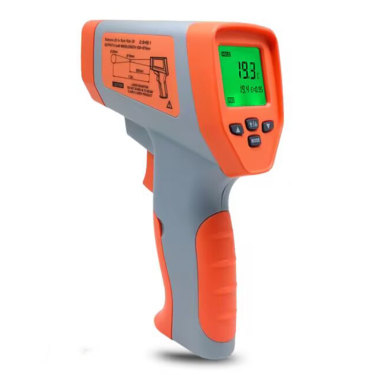Cooking Thermometer: Essential Tool for Perfectly Cooked Meals
April 26, 2025 | News | No Comments

# Cooking Thermometer: Essential Tool for Perfectly Cooked Meals
## Why Every Kitchen Needs a Cooking Thermometer
A cooking thermometer is one of the most underrated yet essential tools in any kitchen. Whether you’re a professional chef or a home cook, this simple device can make the difference between a perfectly cooked meal and a culinary disaster. Unlike guesswork or visual cues, a thermometer provides precise temperature readings that ensure food safety and optimal taste.
## Types of Cooking Thermometers
### 1. Instant-Read Thermometers
These thermometers provide quick temperature readings within seconds. They’re perfect for checking the doneness of meats, poultry, and fish without leaving the oven or grill open for too long.
### 2. Leave-In Thermometers
Designed to remain in the food while it cooks, these thermometers often come with alarms that alert you when the desired temperature is reached. They’re ideal for roasting large cuts of meat or baking.
### 3. Oven-Safe Thermometers
These thermometers can withstand high oven temperatures and are typically used for monitoring dishes that require long cooking times, like casseroles or slow-roasted meats.
### 4. Candy/Deep-Fry Thermometers
Specialized for high-temperature cooking, these thermometers help achieve perfect results when making candy, frying foods, or working with sugar syrups.
## The Science Behind Perfect Cooking
Food safety experts agree that proper internal temperatures are crucial for eliminating harmful bacteria while maintaining food quality. For example:
– Poultry should reach 165°F (74°C)
– Ground meats should reach 160°F (71°C)
– Whole cuts of beef, pork, lamb, and veal should reach 145°F (63°C) with a 3-minute rest time
– Fish should reach 145°F (63°C)
Using a cooking thermometer takes the guesswork out of these critical temperatures, ensuring both safety and perfect doneness.
## Choosing the Right Cooking Thermometer
When selecting a cooking thermometer, consider these factors:
– Accuracy: Look for thermometers with ±1°F (±0.5°C) accuracy
– Speed: Instant-read models should provide readings in 2-3 seconds
– Temperature range: Ensure it covers the temperatures you’ll be working with
– Durability: Choose models with sturdy construction and waterproof designs if needed
– Display: Large, easy-to-read displays are helpful, especially in low-light conditions
## Proper Thermometer Use Tips
Keyword: cooking thermometer
To get the most accurate readings:
– Insert the probe into the thickest part of the food, avoiding bones or fat
– For thin foods like burgers, insert the probe sideways
– Clean the thermometer thoroughly after each use
– Calibrate your thermometer regularly (many models have calibration features)
– Allow the thermometer to stabilize before reading the temperature
## Beyond Meat: Other Uses for Cooking Thermometers
While most people associate cooking thermometers with meat, they’re useful for many other applications:
– Checking bread doneness (190-210°F/88-99°C internal temperature)
– Monitoring milk temperature for yogurt making (110°F/43°C)
– Ensuring perfect chocolate tempering (88-90°F/31-32°C for dark chocolate)
– Testing oil temperature for deep frying (typically 350-375°F/177-191°C)
## The Bottom Line
Investing in a quality cooking thermometer is one of the smartest decisions any cook can make. It takes the stress out of cooking, ensures food safety, and helps achieve consistently perfect results. Whether you’re grilling steaks, roasting a turkey, or making candy, a reliable thermometer is your best ally in the kitchen.